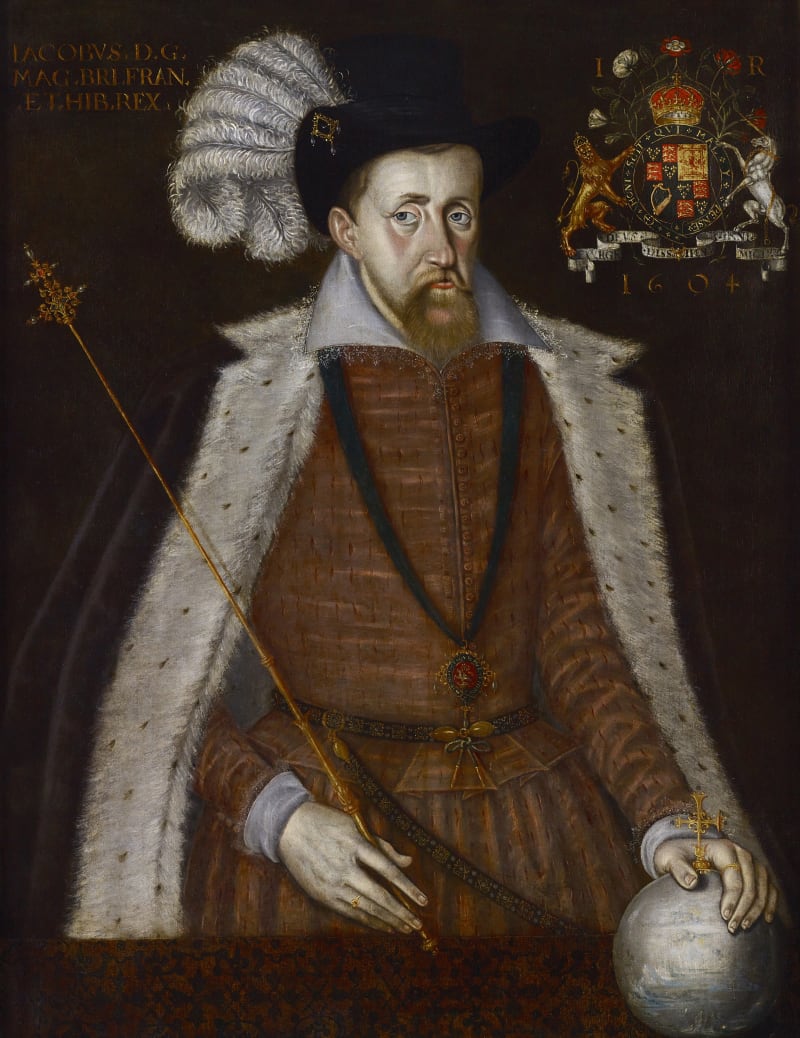This portrait of King Charles II in the robes of the Sovereign of the Order of the Garter is a superb statement of the monarch's magnificence, of his shrewd and insightful character and of the virtuosity of Sir Peter Lely and his studio.
After a long abeyance under the Republic the Order of the Garter was re-established by Charles II at his Restoration. The King and the Companions took considerable pleasure in the opulence of the Garter costume; their habit of wearing the robes not only for the Garter procession at Windsor and for the subsequent feast but for walking afterwards in Windsor Great Park provoked the criticism of Samuel Pepys. Portraits of the King in Garter robes exist not only by the hand of Lely but also by Wright and Riley. Lely produced a number of full-length portraits of Garter knights in the late 1660s and 1670s, as well as a series of drawings that depict all...
This portrait of King Charles II in the robes of the Sovereign of the Order of the Garter is a superb statement of the monarch's magnificence, of his shrewd and insightful character and of the virtuosity of Sir Peter Lely and his studio.
After a long abeyance under the Republic the Order of the Garter was re-established by Charles II at his Restoration. The King and the Companions took considerable pleasure in the opulence of the Garter costume; their habit of wearing the robes not only for the Garter procession at Windsor and for the subsequent feast but for walking afterwards in Windsor Great Park provoked the criticism of Samuel Pepys. Portraits of the King in Garter robes exist not only by the hand of Lely but also by Wright and Riley. Lely produced a number of full-length portraits of Garter knights in the late 1660s and 1670s, as well as a series of drawings that depict all of the participants in the Garter Procession, which may have been intended for some grand but unexecuted decorative scheme.
Appropriately, this portrait was long in the possession of a family whose members lost their lives and fortunes in the service of the Stuarts. Sir John Penruddock (1619-1655) served in the army of Charles I and was appointed by the King High Sheriff of Wiltshire 1643-44. His sons fought on the Royalist side in the war, two of whom lost their lives in the King's service.
At the conclusion of the First Civil War, Sir John was fined 890l, later reduced to 490l, for his delinquency, and his surviving son’s obligation was assessed at 1,000l. Despite these penalties the family remained committed to the cause and determined to pledge his last fortune in the service of the monarchy. Accordingly, in March 1655 with two hundred followers he staged an uprising in the name of Charles II and occupied Salisbury, where he proclaimed the King on March 12th, arresting the Parliamentarian judges Rolle and Nicholas who where there on circuit. From Salisbury Penruddock proceeded to Blandford, where he proclaimed the King, but where he failed to secure the popular support he had anticipated. Cornwall was reputed to be in arms for the King, but en route for that county he was surprised at South Molton in Devon by forces loyal to Cromwell and captured with sixty of his followers.
His trial judges in a proceeding of oyer et terminer brought by Cromwell included the two whom he had taken at Salisbury. Despite his good conduct to them at that time there was little leniency shown. His defence that he was guilty of no treason by virtue of his loyalty to the true authority was too little purpose; nor was any value placed on supposed pledges of safety at his arrest. He was duly sentenced to death and was beheaded at Exeter May 16th 1655.
On petition from Penruddock's children the Protectot granted them a portion of their father's estate. Lady Penruddock received little from the King, however, in return for her husband's loyalty; her request for a monopoly on the production of glasses at the Restoration was not met. The family tradition that this portrait was a Royal presentation may well record the truth, but it cannot have been a gift of 1660. The portrait type is that of Lely''s last official image of the King of c.1675, though not a state portrait, in the sense that the King wear Garter robes. This portrait is a reduction of the full-length portrait which survives in versions in the collection of the Duke of Grafton and in the Studio example formerly at the Bridewell Royal Hospital. If the portrait was a gift from the King to Thomas Penruddock MP it would not be uncharacteristic for Royal gratitude to express itself fifteen years late.
Quite possibly, of course, the King may have found the Penruddock revolt a ridiculous and inconvenient enterprise. One of the aspects of Charles II's character that makes him and his portraiture especially appealing is his prudence and cynicism. Both of these qualities had shown him that after the failure of the Worcester campaign in 1651 there was to be no future in armed uprising against Cromwell, and that he was likely to regain his crown only through the invitation of his subjects. Violent and unpeaceable behaviour by his adherents cannot have been seen as a way to advance this cause. It is certainly significant that when the King's Restoration was plotted in 1659/60, some of its principal agents were promininent officers in the Republican regime such as Edward Montague, later Earl of Sandwich, and George Monck, created Duke of Albermarle.
When this painting left the collection of the Penruddock family in 1930 it did not shed its close Caroline associations, since it was bought by the 6th Earl Nelson (1890-1957), who traced his descent from the monarch through the Dukes of Saint Albans, offspring of Charles II and Nell Gwynn.

